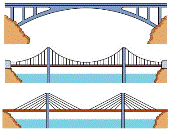Civil and Environmental Engineering
ORCID IDs
Date of this Version
8-30-2005
Abstract
The buildup of phosphorus (P) in the soil is a major factor limiting the operating life of a wastewater land treatment system. In this study, we evaluated changes of chemical properties, P profiles, and adsorption isotherms in the soils of a Muskegon wastewater land treatment system, which has received wastewater for ~30 years. It was found that the pH in the 15-cm topsoil increased from ~5-6 in 1973 to ~7.4-7.8 in 2003; a large amount of salt (e.g., Ca, Mg) in wastewater was adsorbed by the soil; the soil Al content (either exchangeable or oxalate extractable) decreased, while the oxalate-extractable Fe content remained at the same level. Ca-bound P accounted for ≥70% of the total P adsorbed in the soil. The soil P adsorption capacity increased and was positively correlated with the concentration of exchangeable Ca in the soil. A higher concentration of exchangeable Ca was found in the 15- cm topsoil, where a higher total organic carbon was present. More P was accumulated in the upper soil than in the deeper soil. The adsorption of Ca in wastewater by the soil may extend the life expectancy of the Muskegon land treatment system.


Comments
Published in Environ. Sci. Technol. 2005, 39, 7240-7245.